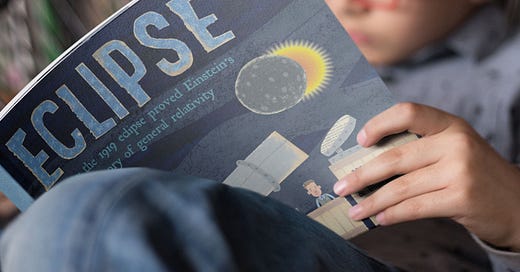Selling Children's Books to the School and Public Library Market
How to Capture a Librarian's Attention
Libraries are a popular market for the indie publisher, but it’s not an easy market to reach. Interesting, however, is that there is a score card, of sorts. World Cat is an online catalog of libraries and can tell you which libraries already own your books. It’s not all-encompassing, but it does cover thousands of libraries (mostly public libraries, not school libraries) worldwide who that “enable their participation in OCLC’s web visibility program.” OCLC is the Online Computer Library Center. It currently displays reviews from Goodreads. So, not everyone, but a lot. For us, it’s important because you can keep tabs on your books.
Currently, when I search for “Darcy Pattison,” I find 220 results: 150 print books, and 95 ebooks. For any title, you can also see all formats. Click on a title, and you can locate a book in a library within a 200 mile radius of your location. Poke around and you’ll find many more details!
By way of comparison, Kate DiCamillo has 1574 books, 2K print books, and 520 ebooks, and (interesting!) 42 Braille books.
Librarians Care About Two Things: Patrons and Critical Acclaim
Librarians, whether from public or school libraries, serve their communities. They try to purchase and promote books that will appeal to their communities, which means each city and region will have different priorities. The Panorama Project publishes quarterly reports on “which showcase recent Adult Fiction, Adult Nonfiction, and Young Adult titles with the highest unmet demand in America’s public libraries.” Data is shown by regions. See Q3 2022 here. This means you don’t have to compete with New York City or Hawaii. You only need to write books that appeal to your region of the country. (And then let the right librarians know about it!)
This focus on patrons means one big thing: Your audience needs to ask their local public library to buy the book!
When a customer requests a book, librarians try to do just that. Of course, strapped library budgets come into play. But whenever possible, librarians listen to patrons and purchase requested books. This goes for print or ebook acquisitions.
It’s as simple and as complicated as that! If you have a mailing list, it’s worth a dedicated email asking fans to request your books at their local libraries. They’ll have good intentions! But getting them to walk into the library and do it? Good luck!
Libraries Pay Attention to Reviews and Other Critical Acclaim
When a library is considering books for its collection, it inevitably turns to reviews, especially school librarians. Not Amazon reviews. They want reviews from School Library Journal (SLJ), Kirkus, Publisher’s Weekly, Bulletin for the Center of Children’s Books (BCCB), Horn Book (rarely, if ever, reviews an indie book), Booklist, and so on. The major review journals for children’s books do matter.
Should you pay for a review? For example Kirkus charges $399 for a children’s picture book review, and $450 for a novel. Will you sell enough extra books to pay for that? Children’s librarians DO pay attention to the reviews. Starred reviews get them excited, especially multiple starred reviews.
If you’re writing romance for adults, and you only plan to publish an ebook, do NOT pay for reviews. If you publish a children’s picture book, with high quality art and well-edited and produced, a review might be helpful. Might. As with much marketing, it’s always tricky to define what works. The only way to know if to test it with your books.
Avoid any publications that are focused on the indie market only. These type reviews and award rarely get respect from librarians.
My policy is to submit for reviews to Kirkus, SLJ, Booklist and other smaller places as appropriate. As an example, I’ll send science fiction novels to Locus, because that’s their speciality. To date, I’ve had four starred reviews (PW and Kirkus), which resulted in my books being included in lists such as this and this, and a featured article.
If you choose to submit, notice that most review journals want the books three months prior to publication. Read carefully how to submit and follow instructions.
Likewise, important awards can capture a librarian’s attention. See ALLI’s list that evaluates award. However, I do recommend that you submit to appropriate, respected awards.
Is your Book Ready?
If you want to enter the library market, the highest quality is expected. Get feedback on manuscripts and artwork. Revise. Hire a good copyeditor. Build in a 3-4 month time period to allow prepublication time for reviews. And get a CIP block.
Where Do Librarians Buy Books?
Public libraries buy from library distributors, direct from wholesalers such as Ingram, or on Amazon. If you POD your book with Ingram Spark, your books are already in Ingram Wholesale. Done!
Most school librarians buy books from an educational distributor because their school has an account there. Sometimes, they’ll have accounts in several places, and may have an Amazon account. These specialized distributor give extra perks to school librarians by paying attention to state’s curriculum needs and creating appropriate lists, providing cataloguing services, and appropriate discounts. For ebook programs, they host the ebooks and provide easy online access programs.
Below, in a subscriber’s resource, I’ll list specific places to get started marketing to libraries.



